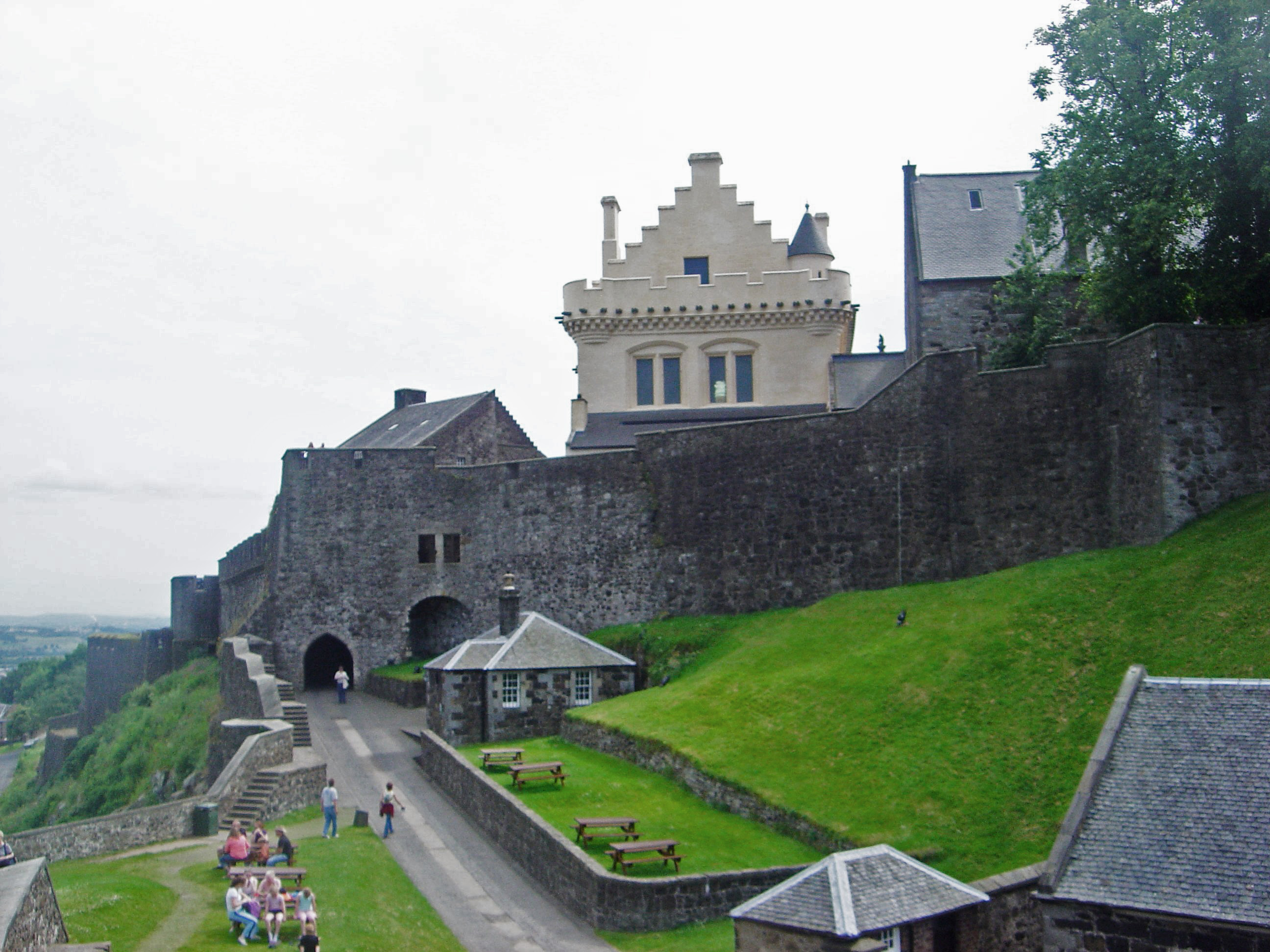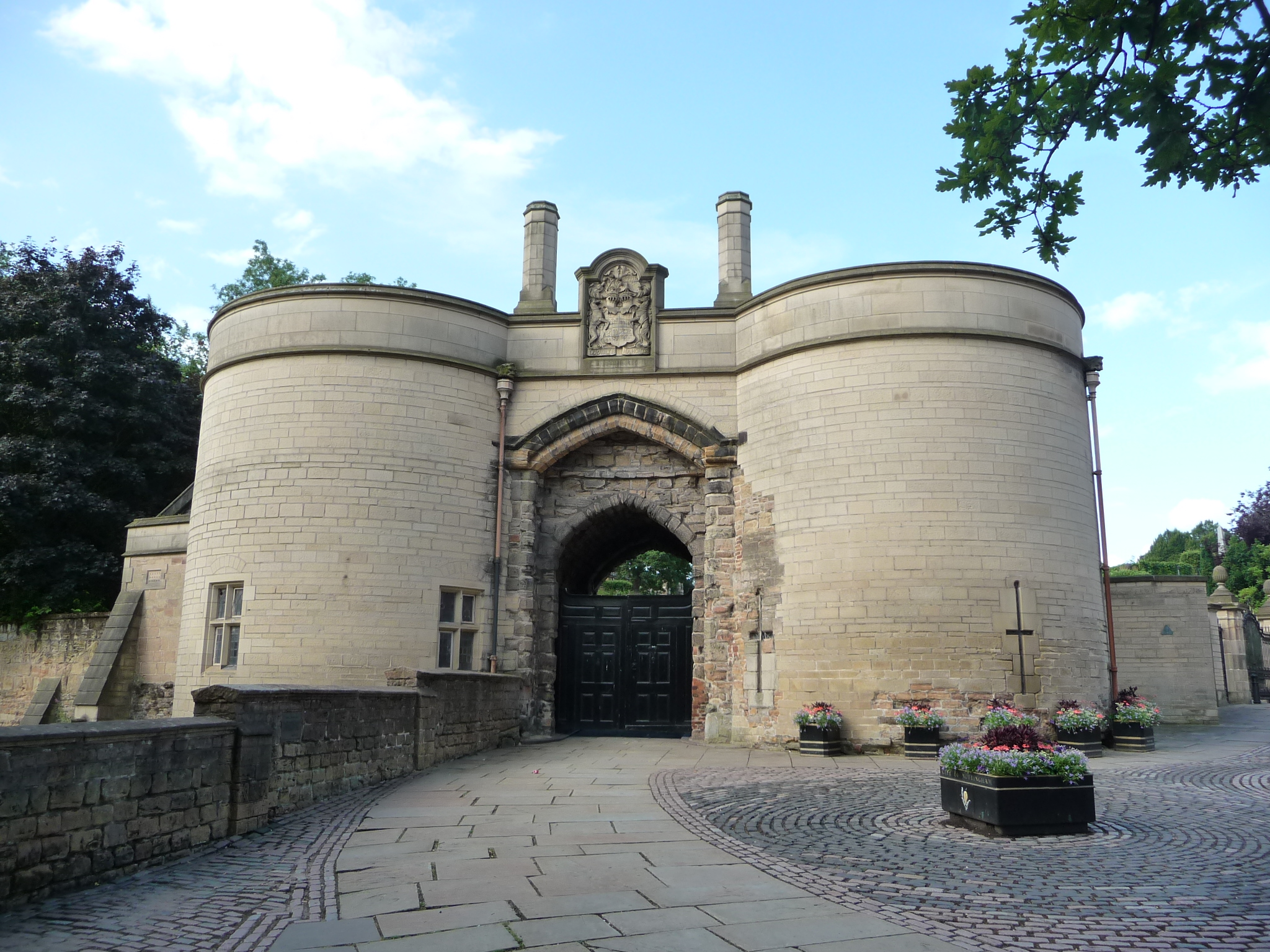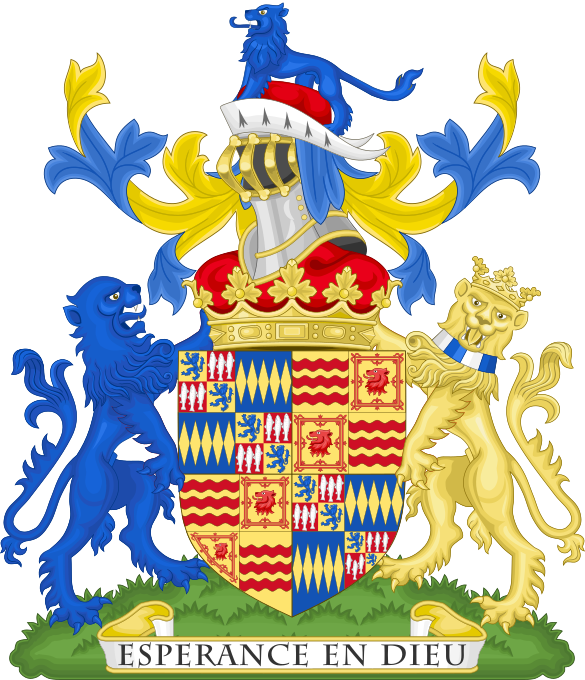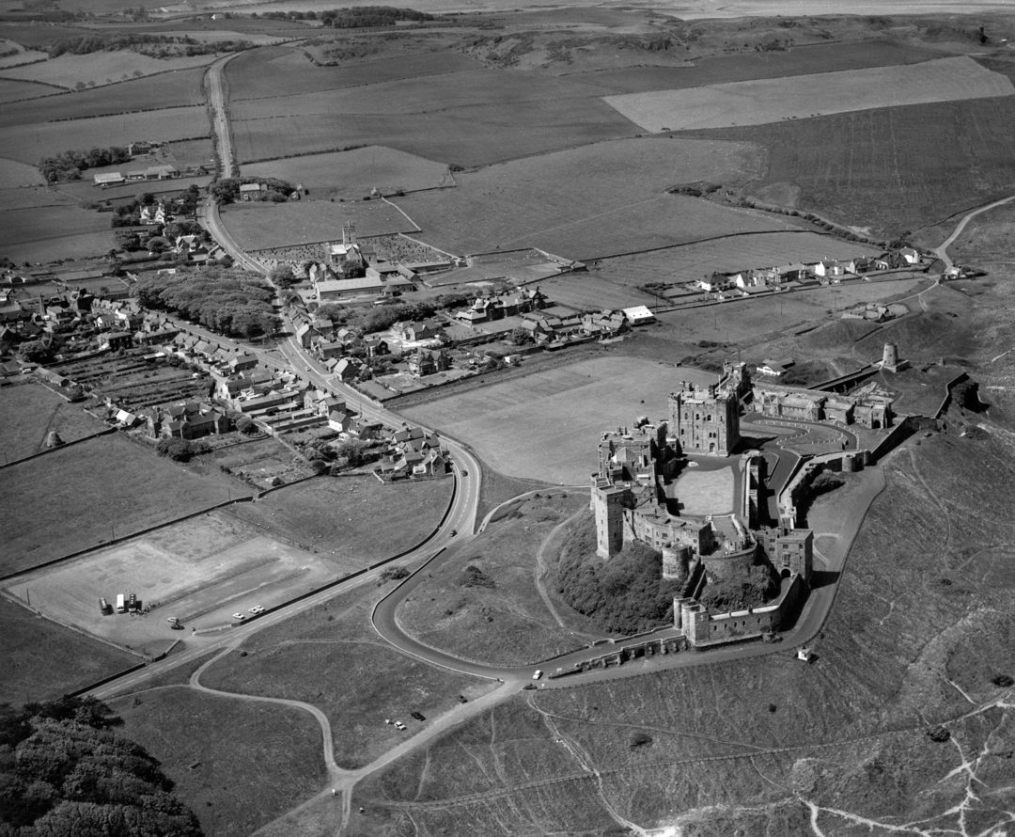|
Capture Of Berwick (1482)
In July 1482 an English army invaded Scotland during the Anglo-Scottish Wars. The town of Berwick-upon-Tweed and its castle were captured and the English army briefly occupied Edinburgh. These events followed the signing of the Treaty of Fotheringhay, 11 June 1482, in which Alexander Stewart, Duke of Albany, the brother of James III of Scotland declared himself King of Scotland and swore loyalty to Edward IV of England. The follow-up invasion of Scotland under the command of Edward's brother, Richard III of England, Richard, Duke of Gloucester failed to install Albany on the throne, but Berwick has remained English ever since the castle surrendered on 24 August. The English army left Edinburgh with a promise for the repayment of the dowry paid for the marriage of Cecily of York, Princess Cecily of England to the James IV of Scotland, Scottish Prince. Treaty of Fotheringhay Edward IV was disappointed by the failure of his 1474 treaty with James III who had promised that his son, ... [...More Info...] [...Related Items...] OR: [Wikipedia] [Google] [Baidu] |
Anglo-Scottish Wars
The Anglo-Scottish Wars comprise the various battles which continued to be fought between the Kingdom of England and the Kingdom of Scotland from the time of the Wars of Independence in the early 14th century through to the latter years of the 16th century. Although the Wars of Independence, in which Scotland twice resisted attempted conquest by Plantagenet kings of England, formally ended in the treaties of 1328 and 1357 respectively, relations between the two countries remained uneasy. Incursions by English kings into Scotland continued under Richard II and Henry IV and informal cross-border conflict remained endemic. Formal flashpoints on the border included places remaining under English occupation, such as Roxburgh Castle and the port of Berwick-upon-Tweed. Roxburgh was recaptured by the Scots in 1460 under Mary of Guelders after the death of James II in the same campaign. Similarly, they captured Berwick in 1461 in exchange for support to the Lancastrians. Berwick had ... [...More Info...] [...Related Items...] OR: [Wikipedia] [Google] [Baidu] |
James IV Of Scotland
James IV (17 March 1473 – 9 September 1513) was List of Scottish monarchs, King of Scotland from 11 June 1488 until his death at the Battle of Flodden in 1513. He inherited the throne at the age of fifteen on the death of his father, James III of Scotland, James III, at the Battle of Sauchieburn, following a rebellion in which the younger James was the figurehead of the rebels. James IV is generally regarded as the most successful of the House of Stuart, Stewart monarchs of Scotland. He was responsible for a major expansion of the Royal Scots Navy, Scottish royal navy, which included the founding of two royal dockyards and the acquisition or construction of 38 ships, including the ''Great Michael'', the largest warship of its time. James was a patron of the arts and took an active interest in the law, literature and science. With his patronage the Chepman and Myllar Press, printing press came to Kingdom of Scotland, Scotland, the University of Aberdeen and the Royal College o ... [...More Info...] [...Related Items...] OR: [Wikipedia] [Google] [Baidu] |
Nottingham
Nottingham ( , East Midlands English, locally ) is a City status in the United Kingdom, city and Unitary authorities of England, unitary authority area in Nottinghamshire, East Midlands, England. It is located south-east of Sheffield and north-east of Birmingham. Nottingham is the legendary home of Robin Hood and to the lace-making, bicycle and Smoking in the United Kingdom, tobacco industries. The city is also the county town of Nottinghamshire and the settlement was granted its city charter in 1897, as part of Queen Victoria's Diamond Jubilee celebrations. In the 2021 United Kingdom census, 2021 Census, Nottingham had a reported population of 323,632. The wider conurbation, which includes many of the city's suburbs, has a population of 768,638. It is the largest urban area in the East Midlands and the second-largest in the Midlands. Its Functional Urban Area, the largest in the East Midlands, has a population of 919,484. The population of the Nottingham/Derby metropolitan a ... [...More Info...] [...Related Items...] OR: [Wikipedia] [Google] [Baidu] |
Blackness Castle
Blackness Castle is a 15th-century fortress, near the village of Blackness, Falkirk, Blackness, Scotland, on the south shore of the Firth of Forth. It was built, probably on the site of an earlier fort, by George Crichton, 1st Earl of Caithness, Sir George Crichton in the 1440s. At this time, Blackness was the main port serving the Royal Burgh of Linlithgow, one of the main residences of the Scottish monarch. The castle, together with the Crichton lands, passed to James II of Scotland in 1453, and the castle has been crown property ever since.MacIvor, p. 6. It served as a state prison, holding such prisoners as David Beaton, Cardinal Beaton and the Archibald Douglas, 6th Earl of Angus, 6th Earl of Angus.MacIvor, p. 20. Strengthened by James Hamilton of Finnart, Sir James Hamilton of Finnart in the mid-16th century, the castle became one of the most advanced artillery fortifications of its time in Scotland. A century later, these defences were not enough to prevent Blackness fall ... [...More Info...] [...Related Items...] OR: [Wikipedia] [Google] [Baidu] |
River Forth
The River Forth is a major river in central Scotland, long, which drains into the North Sea on the east coast of the country. Its drainage basin covers much of Stirlingshire in Scotland's Central Belt. The Scottish Gaelic, Gaelic name for the upper reach of the river, above Stirling, is ''Abhainn Dubh'', meaning "black river". The name for the river below the tidal reach (just past where it is crossed by the M9 motorway) is ''Uisge For''. Name ''Forth'' derives from Proto-Celtic ''*Vo-rit-ia'' (slow running), yielding '':gd:Linne Foirthe, Foirthe'' in Old Gaelic. Course The Forth rises in the Trossachs, a mountainous area west of Stirling. Ben Lomond's eastern slopes drain into the Duchray Water, which meets with Avondhu River coming from Loch Ard. The confluence of these two streams is the nominal start of the River Forth. From there it flows roughly eastward through Aberfoyle, Stirling, Aberfoyle, joining with the Kelty Water about 5 km further downstream. It then flo ... [...More Info...] [...Related Items...] OR: [Wikipedia] [Google] [Baidu] |
Robert Radcliffe Of Hunstanton
Sir Robert Radcliffe or Radclyffe (died 1497) was an English landowner. Radcliffe was a son of Thomas Radcliffe, and not, as is sometimes stated, a member of the Attleborough branch of the family. His estates were at Hunstanton in Norfolk. He was Steward of the Lincolnshire estates of the Richard III of England, Duke of York. Radcliffe married Joan Stanhope in 1472. She was a daughter of Sir Richard Stanhope and Maud Cromwell, a sister of Ralph Cromwell, 3rd Baron Cromwell. Joan Stanhope's first husband was Sir Humphrey Bourchier, son of Henry Bourchier, 1st Earl of Essex, who was killed at the battle of Barnet in 1471. Joan was an heir of Ralph Cromwell and was known as "Lady Cromwell". Robert Radcliffe became lord of the manor of Tattershall. Joan Stanhope, Lady Cromwell died on 10 March 1489–90 and was buried at Holy Trinity, Tattershall, near Ralph Cromwell's home at Tattershall Castle, where there is a commemorative brass image formerly including the Radcliffe coat of arm ... [...More Info...] [...Related Items...] OR: [Wikipedia] [Google] [Baidu] |
Louis XI Of France
Louis XI (3 July 1423 – 30 August 1483), called "Louis the Prudent" (), was King of France from 1461 to 1483. He succeeded his father, Charles VII. Louis entered into open rebellion against his father in a short-lived revolt known as the Praguerie in 1440. The king forgave his rebellious vassals, including Louis, to whom he entrusted the management of the Dauphiné, then a province in southeastern France. Louis's ceaseless intrigues, however, led his father to banish him from court. From the Dauphiné, Louis led his own political establishment and married Charlotte of Savoy, daughter of Louis, Duke of Savoy, against the will of his father. Charles VII sent an army to compel his son to his will, but Louis fled to Burgundy, where he was hosted by Philip the Good, the Duke of Burgundy, Charles's greatest enemy. When Charles VII died in 1461, Louis left the Burgundian court to take possession of his kingdom. His taste for intrigue and his intense diplomatic activity earne ... [...More Info...] [...Related Items...] OR: [Wikipedia] [Google] [Baidu] |
Earl Of Northumberland
The title of Earl of Northumberland has been created several times in the Peerage of England and of Great Britain, succeeding the title Earl of Northumbria. Its most famous holders are the House of Percy (''alias'' Perci), who were the most powerful noble family in Northern England for much of the Middle Ages. The heirs of the Percys, via a female line, were ultimately made Duke of Northumberland in 1766, and continue to hold the earldom as a subsidiary title. History Percy family William de Percy, 1st Baron Percy, was in the train of William I. After arriving in England following the Harrying of the North (1069–70), he was bestowed modest estates in Yorkshire by Hugh d'Avranches. However, by the reign of Henry II the family was represented by only an heiress, Agnes de Percy (died 1203) following the death of the third feudal baron. As her dowry contained the manor of Topcliffe in Yorkshire, Adeliza of Louvain, the widowed and remarried second wife of Henry I, arran ... [...More Info...] [...Related Items...] OR: [Wikipedia] [Google] [Baidu] |
Bamburgh Castle
Bamburgh Castle, on the northeast coast of England, by the village of Bamburgh in Northumberland, is a Grade I listed building. The site was originally the location of a Celtic Britons, Celtic Brittonic fort known as ''Din Guarie'' and may have been the capital of the kingdom of Bernicia from its foundation 420 to 547. In that last year, it was captured by King Ida of Bernicia. After passing between the Britons and the Anglo-Saxons three times, the fort came under Anglo-Saxon control in 590. The Normans later built a new castle on the site, which forms the core of the present one. After a revolt in 1095 supported by the castle's owner, it became the property of the List of English monarchs, English monarch. In the 17th century, financial difficulties led to the castle deteriorating, but it was restored by various owners during the 18th and 19th centuries. It was finally bought by the Victorian era industrialist William Armstrong, 1st Baron Armstrong, William Armstrong, who comp ... [...More Info...] [...Related Items...] OR: [Wikipedia] [Google] [Baidu] |
Archibald Douglas, 5th Earl Of Angus
Archibald may refer to: People and characters *Archibald (name), a masculine given name and a surname *Archibald (musician) (1916–1973), American R&B pianist * Archibald, a character from the animated TV show ''Archibald the Koala'' Other uses *Archibald, Louisiana, a community in the United States *Archibald Prize, an Australian portraiture art prize for painting See also *Archibald House, several buildings * *Archie (other) *Archbold (other) Archbold may refer to: People * Anne Mills Archbold (1873–1968), American heiress, big game hunter and philanthropist * Barry Archbold (born 1933), Australian rules footballer * Darin Archbold (born 1969), American basketball player * Jo Arc ... * Giuseppe Arcimboldo (1527–1593), Italian painter {{disambiguation, hn ... [...More Info...] [...Related Items...] OR: [Wikipedia] [Google] [Baidu] |
Auld Alliance
The Auld Alliance ( Scots for "Old Alliance") was an alliance between the kingdoms of Scotland and France against England made in 1295. The Scots word ''auld'', meaning ''old'', has become a partly affectionate term for the long-lasting association between the two countries. The alliance was never formally revoked, although it is considered by some to have ended with the signing of the Treaty of Edinburgh in 1560. The alliance played a significant role in the relations among Scotland, France and England. The alliance was renewed by all the French and Scottish monarchs of that period except Louis XI. By the late 14th century, the renewal occurred regardless of whether either kingdom was at war with England at the time.BONNER, ELIZABETH. “Scotland’s ‘Auld Alliance’ with France, 1295–1560.” ''History'', vol. 84, no. 273, Wiley, 1999, pp. 5–30, . The alliance began with the treaty signed by John Balliol and Philip IV of France in 1295 against Edward I of Engl ... [...More Info...] [...Related Items...] OR: [Wikipedia] [Google] [Baidu] |
St Giles' Cathedral
St Giles' Cathedral (), or the High Kirk of Edinburgh, is a parish church of the Church of Scotland in the Old Town, Edinburgh, Old Town of Edinburgh. The current building was begun in the 14th century and extended until the early 16th century; significant alterations were undertaken in the 19th and 20th centuries, including the addition of the Thistle Chapel. St Giles' is closely associated with many events and figures in Scottish history, including John Knox, who served as the church's minister after the Scottish Reformation.Gordon 1958, p. 31. Likely founded in the 12th centuryMcIlwain 1994, p. 4. and dedicated to Saint Giles, the church was elevated to collegiate church, collegiate status by Pope Paul II in 1467. In 1559, the church became Protestant with John Knox, the foremost figure of the Scottish Reformation, as its minister. After the Reformation, St Giles' was internally partitioned to serve multiple congregations as well as secular purposes, such as a prison and as a ... [...More Info...] [...Related Items...] OR: [Wikipedia] [Google] [Baidu] |








